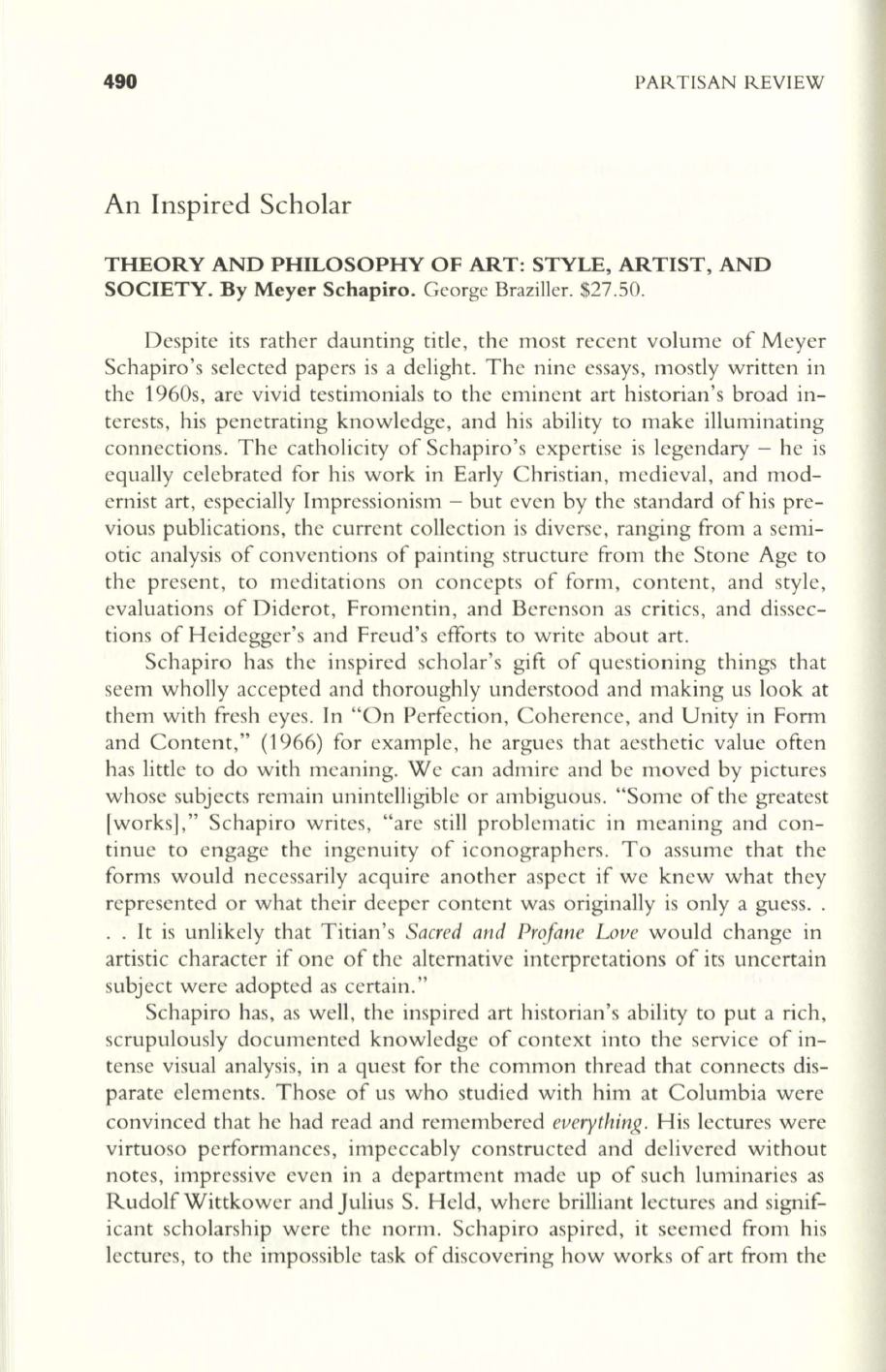
490
PARTISAN REVIEW
An Inspired Scholar
THEORY AND PHILOSOPHY OF ART: STYLE, ARTIST, AND
SOCIETY. By Meyer Schapiro.
George Braziller.
$27.50.
Despite its rather daunting title, the most recent volume of Meyer
Schapiro's selected papers is a delight. The nine essays, mostly written in
the 1960s, are vivid testimonials to the eminent art historian's broad in–
terests, his penetrating knowledge, and his ability to make illuminating
connections. The catholicity of Schapiro's expertise is legendary - he is
equally celebrated for his work in Early Christian, medieval, and mod–
ernist art, especially
r
mpressionism - but even by the standard of his pre–
vious publications, the current collection is diverse, ranging from a semi–
otic analysis of conventions of painting structure from the Stone Age to
the present, to meditations on concepts of form, content, and style,
evaluations of Diderot, Fromentin, and Berenson as critics, and dissec–
tions of Heidegger's and Freud's efforts to write about art.
Schapiro has the inspired scholar's gift of questioning things that
seem wholly accepted and thoroughly understood and making us look at
them with fresh eyes. In "On Perfection, Coherence, and Unity in Form
and Content," (1966) for example, he argues that aesthetic value often
has little to do with meaning. We can admire and be moved by pictures
whose subjects remain unintelligible or ambiguous. "Some of the greatest
[works]," Schapiro writes, "are still problematic in meaning and con–
tinue to engage the ingenuity of iconographers. To assume that the
forms would necessarily acquire another aspect if we knew what they
represented or what their deeper content was originally is only a guess..
. . It is unlikely that Titian's
Sacred and Profane Love
would change in
artistic character if one of the alternative interpretations of its uncertain
subject were adopted as certain."
Schapiro has, as well, the inspired art historian's ability to put a rich,
scrupulously documented knowledge of context into the service of in–
tense visual analysis, in a quest for the common thread that connects dis–
parate elements. Those of us who studied with him at Columbia were
convinced that he had read and remembered
everything.
His lectures were
virtuoso performances, impeccably constructed and delivered without
notes, impressive even in a department made up of such luminaries as
Rudolf Wittkower and Julius S. Held, where brilliant lectures and signif–
icant scholarship were the norm. Schapiro aspired, it seemed from his
lectures, to the impossible task of discovering how works of art from the


